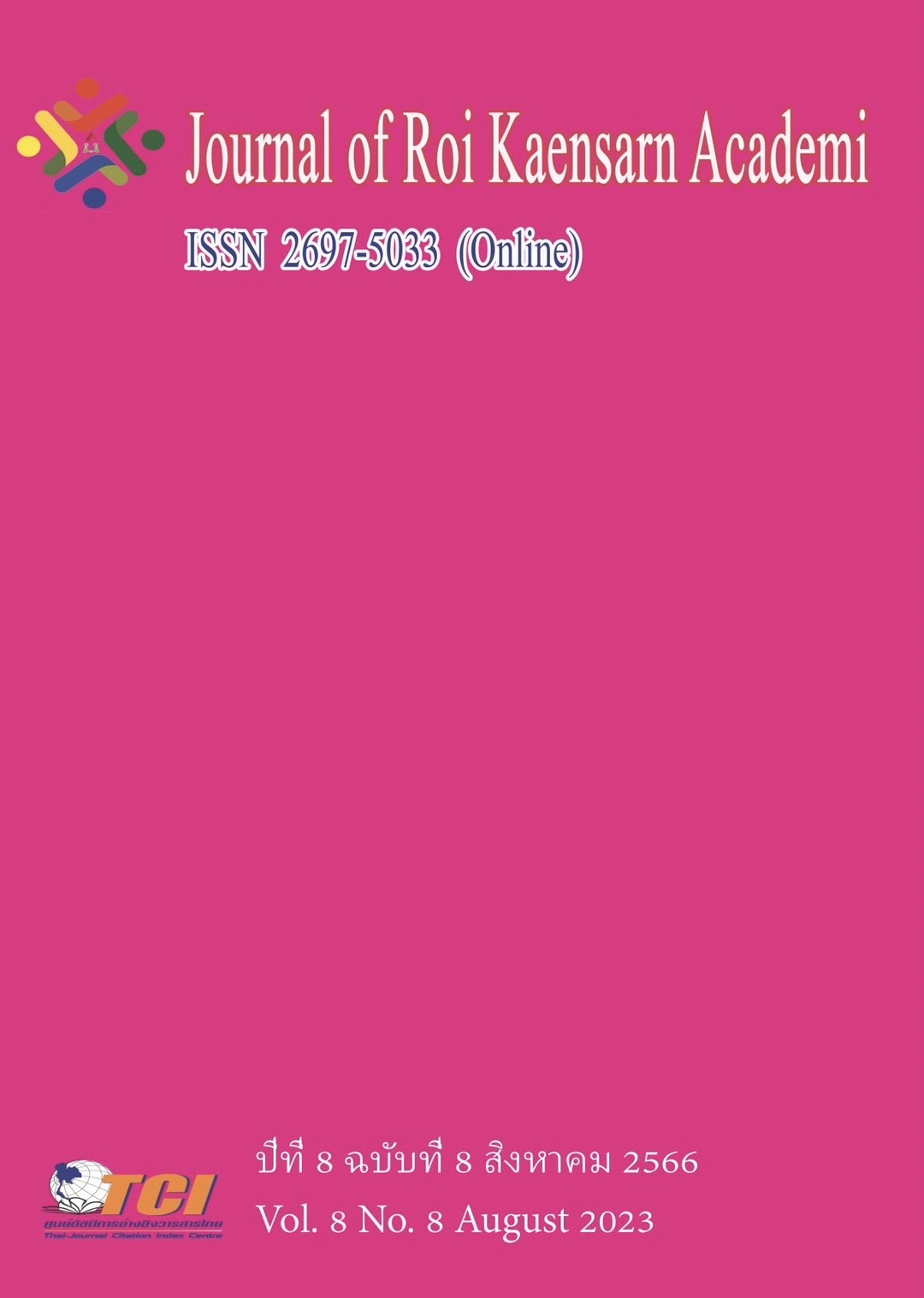The "spatial consciousness" constructed by China's "the world's most beautiful book"
Main Article Content
บทคัดย่อ
Books try to build a unique sense of space that integrates with the content, so book designers should use the "spatial consciousness" aesthetic theory through different design concepts, design methods, design materials and other design practices. Based on the perspective of Chinese aesthetics, combined with the "spatial consciousness" of Zong Baihua, a master of Chinese aesthetics, the article deeply analyzes the connotation and expression of Chinese book design. From China in recent years, "the world's most beautiful book" winning works, the Chinese aesthetic theory ZongBaiHua "space consciousness" and the integration of modern book design concept, technology, a kind of beauty of vitality, the reality, harmony of space design practice is generated, and the space to the book design aesthetic theory of practice, a book unique "space consciousness" building exploration, highlight the existence of electronic digital age traditional paper books and cultural significance, for China and the world modern book design provides the Chinese experience.
This article reveals the construction of the book design of the four award-winning books in China on the international high-level Leipzig "World's Most Beautiful Book" platform, which combines the ancient and modern "poetry, calligraphy, and painting spatial consciousness" and "separated architectural spatial consciousness" of Chinese aesthetics master Zong Baihua. In fact, it is a cosmology of "time and space integration".
Article Details
เอกสารอ้างอิง
Zhu Yongchun (2002) Zong Baihua's architectural aesthetic thought. Journal of Architecture, 11,44.
See Min Jing, Lu Yongyi (2014). Brief introduction and development of the concept of "space" in modern Chinese architecture (1920s- -1960 s). Times Architecture, 1,152-157.
Zhang Zehong (2013) See Zong Baihua's comparative art thought from the "spatial consciousness". Hundred schools of arts, 8,43.
Zhu Liyuan (2010) Aesthetic Dictionary. Shanghai: Shanghai Dictionary Publishing House.
Zong Baihua (1994) Kant space idealistic said. Zong Baihua (1994) The Complete Works of Zong Baihua: Vol. 1. Hefei: Anhui Education Press.
Zong Baihua (1994) The deficiency and reality in Chinese artistic expression. Zong Baihua (1994) The Complete Works of Zong Baihua: Vol. 3. Hefei: Anhui Education Press.
Zong Baihua (2008) The Complete Works of Zong Baihua: Vol. 3. Hefei: Anhui Education Press.
Liang Sicheng (1998) A History of Chinese architecture. Tianjin: Baihua Literature and Art Publishing House.
Zong Baihua (2008) The Complete Works of Zong Baihua: Vol. 1. Hefei: Anhui Education Press.
Guo Xi (2010) Lin Quan Gaozhi. Jinan: Shandong Pictorial Publishing House.
Teng Gu (2003) Teng Gu Art Collection. Shanghai: Shanghai People's Fine Arts Press.
Zong Baihua (1994) Art (Speech). Zong Baihua (1994) The Complete Works of Zong Baihua: Vol. 1. Hefei: Anhui Education Press.
Sun Yaya (2008). The Beauty of Book Architecture - Analysis of the Enlightenment and Influence of Architectural Concepts on Book Form Design. Beijing: Beijing Institute of Fashion Technology.
Lv Jingren (2017). Calligraphy asked. Shanghai: Shanghai People's Fine Arts Publishing House.
Zhang Qinnan (2004). Read about the city. Beijing: Sanlian Bookstore.
Gu Yuanyuan (2013). On the inherent compatibility between modern Chinese book design and traditional architectural design. Publication and Distribution Research, 7, 94-96.
Hu Ji (2021). There are gaps and connections ": Zong Baihua's aesthetic theory on architectural space. Journal of Social Sciences of Hunan Normal University, 3144-151.
Zong Baihua (1994) Art Studies (Lecture)/Complete Works of Zong Baihua: Volume 1. Hefei: Anhui Education Press.
Xiong Haiyang (2019) The transformation of the sense of space in Chinese painting and the moral theme of modern China -- take Zong Baihua's Chinese aesthetic research as a case. Journal of Zhejiang Gongshang University, 2119-128.
Zong Baihua (1994) The Birth of Chinese Artistic Conception (Revised Draft)/Complete Works of Zong Baihua: Volume 2. Hefei: Anhui Education Press.
Zong Baihua (1994) Space Consciousness Reflected in Chinese Poetry and Painting/Complete Works of Zong Baihua: Volume 2. Hefei: Anhui Education Press.
Zong Baihua (1994) On the Void and Enrichment of Literature and Art/Complete Works of Zong Baihua: Volume 2. Hefei: Anhui Education Press.
Zong Baihua (2008) Complete Works of Zong Baihua (Volume 2). Hefei: Anhui Education Press.

